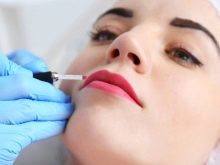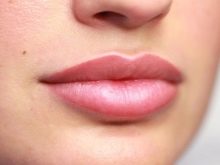Lip microblading
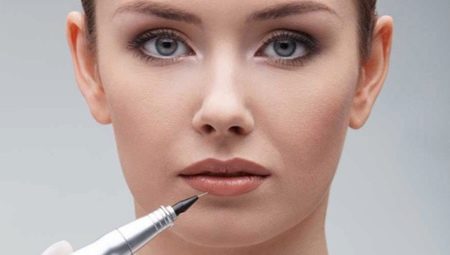
In the field of beauty, there are daily changes: new techniques are being developed, formulas are being improved and new pigments are being created. Microblading is a new development in the field of permanent makeup. In this article, we will consider the features of microblading, we will tell you what it is, we will note the main differences from tattooing, we will indicate contraindications and the duration of action.
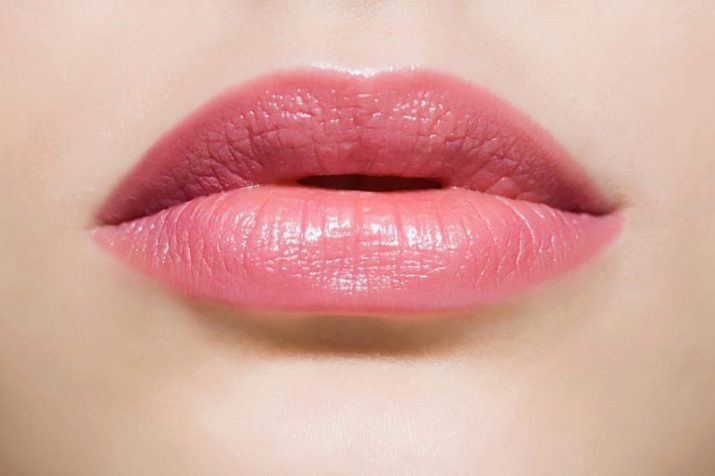

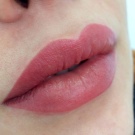
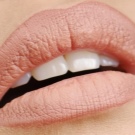
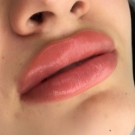
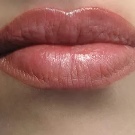
What it is?
Microblading is a manual technique, that is, the direct injection of pigment under the skin. The penetration depth is insignificant - 3 mm, this is enough for the sprayed pigment to be correctly distributed in the skin and stay there much longer. The procedure is carried out with a special spatula with a blade or by soldering needles in one row. The number of needles varies from 2 to 10, such devices are also called maniples. Nowadays there are various handpieces for microblading; the most popular model is the splicing of needles in several rows.
The main advantage of this method is that the rehabilitation period is reduced to a month.
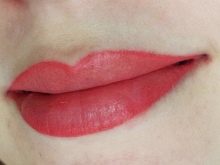
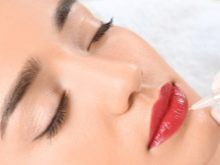
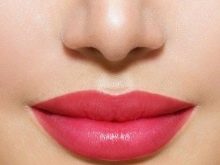
The tattoo technique was developed over 10 years ago and is still in great demand today. Relatively recently, microblading for lips has appeared on the service market, it is also called SofTap.
There are a wide variety of techniques in which microblading is performed. The most popular of them are watercolor and nature techniques. They are great for most girls, they are natural and have a pleasant pigment color on the lips.
Other tattoo techniques such as light kayal and permanent lipstick can also be performed with microblading.
A contour with shading is not provided in this technique, since microblading is mainly aimed at completely filling the entire surface of the lips with pigment.

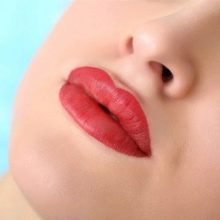
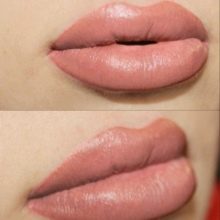
The main positive points are listed below.
- No need to use lipstick or contour pencil every day.
- An excellent alternative variation of cosmetics, especially if you are allergic to the latter.
- Ability to correct lips without surgery.
- With the right pigments, the lip color remains natural.
- The procedure can be done by girls even with a low pain threshold, since the needles penetrate the skin shallowly.
- Severe edema is a rare occurrence in this practice.
- Rehabilitation is easy and painless, provided that all necessary safety measures are taken.
- Rarely occur after procedural scars or scars. This can only happen if an inexperienced craftsman worked.
- The result is good and lasting.


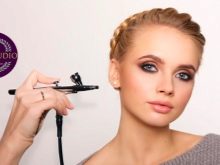
Indications and contraindications
As with all procedures, microblading there are indications and contraindications, which we will consider below.
The indications for use are very extensive. It can be just a cosmetic service to give the lips freshness and fullness of color, or it can be a contour correction to create uniform symmetry. Also, thanks to this procedure, you can give the lips the desired plumpness and volume, while not using Botox or fillers.
But this procedure has enough contraindications. They are divided into those during which microblading cannot be carried out, and those during which such manipulations are absolutely not allowed.
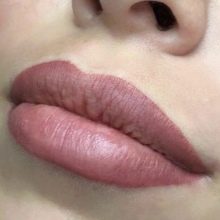
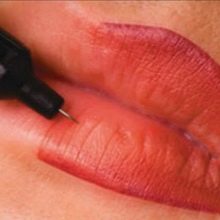
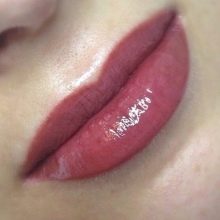
Microblading is contraindicated in people:
- with diabetes mellitus;
- with psoriasis and a predisposition to keloid scars;
- suffering from epilepsy;
- with a positive HIV test;
- intolerant of pigments, since they are considered nonresident inclusions, and people do not always have good compatibility with them (there are cases that girls have an allergic reaction only to a certain color of the pigment);
- with immunity problems.


Let us list the cases when it is better to postpone the procedure due to inflammatory processes.
- SARS and other colds (for example, nasal congestion).
- Eruptions in the lower part of the face, near the lips.
- While taking antibiotics or any other antiviral drugs. It is best to postpone the procedure for up to 1 month after a course of medication.
- If moles appear near the lips, then it is best to discuss this with a dermatologist before the procedure.
- It is not necessary to carry out the procedure or its correction for herpes. And even if it has started to decline, it is better to come to cosmetology in a month.
- Pregnancy or lactation. At this time, you should not carry out any cosmetic procedures, especially if they are being done for the first time.
It should also be remembered that microblading should be done strictly 3-4 months after the cessation of lactation.

What is the difference from tattooing?
Microblading and tattooing techniques are similar. In both cases, pigment is applied under the skin for a certain period of time. And after a certain number of months, a second procedure or correction is required.
But what are the main differences between these techniques?
- The first difference is that the tattoo is applied with only one needle, while microblading has at least two or even more needles in the seam.
- Minimal needle penetration in tattooing - this is 5 mm, so the procedure for some may seem painful and proceed with some complications. When tattooing, a pain reliever is always applied. Microblading does not have such problems, as well as the manifestations of edema, since the needles do not cause severe damage to tissues, and the rehabilitation time is reduced significantly.And immediately after the procedure (three hours later) you can return to your daily "routine".
- Also, the procedures differ in the pigments used. Liquid dyes are chosen for tattooing. And in the course of microblading, thick pigments with high color saturation are used.
- Another difference between the two techniques is that tattooing is almost impossible to remove with a laser, because the pigment penetrates deeply and is similar to tattooing, unlike the second technique.
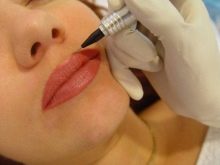
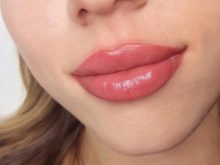
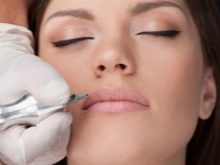
Carrying out the procedure
Before carrying out the procedure, it is necessary to choose the right color, because it will be impossible to change it for some time without laser intervention.
The shade is selected based on the color type, face shape, undertones and hair color.
The procedure itself begins with building a mock-up of the ideal lip shape. Then the stencil is corrected directly on the face, symmetry and volume are added. After that, the procedure itself begins.
- Lips are treated with makeup remover, then they are wiped with a special tonic with disinfecting components, later a soothing ointment is applied.
- After that, a pain reliever based on lidocaine is distributed over the lips.... It does not affect the result and begins to act quickly.
- Lips are lubricated with anesthetic and wait another 15-20 minutesto determine the sensitivity and tone of the skin.
- After checking the sensitivity everything is erased from the lips, the stencil is redrawn.
- Next, a manipula is prepared. All tools are pre-built, but not unpacked. All pigments, handpiece, pigment ring and needles must be opened before the patient's eyes. And also the doctor should wear new disposable gloves.
- After that, the beautician mixes the necessary pigments in the ring and collects the paint in a replaceable module. The doctor then gently transfers the color under the skin. At the same time, during the procedure, the maniples, thanks to the mechanism, give out a characteristic click, notifying that the pigment has been injected to the required depth.
- Spraying is done first on the kennel, then on the main surface of the lips... During the entire procedure, the doctor changes up to 5 modules.
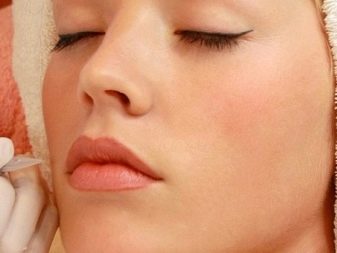
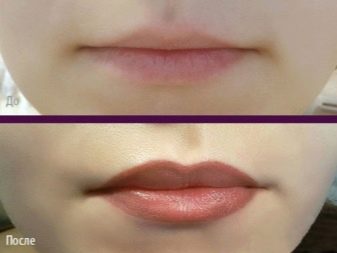
Follow-up care
To maintain the effect of the procedure, as well as not harm the health of your lips, you need to properly care for them. After the session, it is necessary to apply a quick healing ointment for one day. For the next 3-5 days, wash your face with a gel that contains only organic components; it can be replaced with either baby soap or hydrophilic oil. You can use shea butter balm to moisturize your lips.
After the crust has come off, it is worth applying a fat cream or balm to the lips so that they do not dry out further, and then the injected pigment will look saturated.
After carrying out the procedure in the next two weeks, you should not steam the skin, visit the pool or gym. Do not use peels or scrubs in the immediate vicinity of your lips.
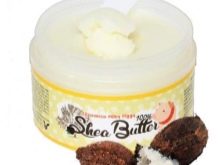
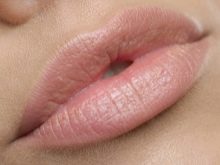
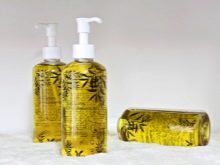
How long does the effect last?
Many girls are always worried about how long the result will last. If you follow all the doctor's recommendations, properly care for your lips after the procedure, then the effect on average lasts from 6 to 18 months.
The pigment can stay under the skin longer or, conversely, less - it depends on several reasons... The first reason is the pigments themselves, their properties and the manufacturer's recommendations, for how long they are designed for. This should always be discussed with the master.
The second reason is more individual, namely the human body. It is impossible to accurately calculate the exact rate at which cell regeneration occurs in the body, how metabolism proceeds. If the metabolism is fast, then the loss of color will occur sooner. If it is delayed, then the pigment stays under the skin longer.
Age-related changes also affect the work of metabolism. This is discussed with the master during the stencil and pigment selection period.

